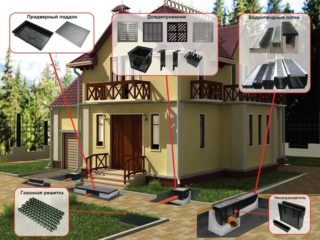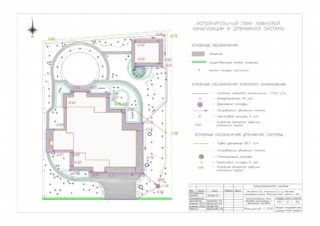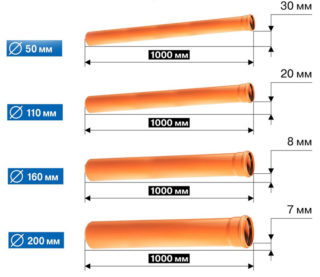Storm sewage is one of the important systems that ensure the optimal operation of buildings, urban, private and public facilities. If rain and melt water is not removed in time, this leads to waterlogging of the earth and further destruction of concrete structures. When building a system, you need to use the recommendations of SNiP for storm drainage systems. Otherwise, all efforts from the work performed are reduced to zero.
Actual requirements for the construction of rainwater drainage

During the design and construction of stormwater, it is important to be guided by official requirements and regulations.
- The sewage system is arranged in such a way as to exclude the ingress of household fecal waters contaminated with chemicals and organic matter into it. It is also forbidden to connect the storm drain to the collector of industrial enterprises. This applies to city highways. If industrial, fecal and domestic wastewater somehow gets into the surface collector, they are not dumped into the nearest reservoir or ravine, but sent through an arranged pipeline to a local treatment plant.
- During the construction of storm drains, a slope must be observed towards the central collector (if we are talking about urban networks) or towards a septic tank, a drainage well, the nearest reservoir (if we are talking about a private area).
- It is advisable to mount the system so that rain, melt water is transported to the receiver or discharge point by gravity. If this is not possible due to the relief in some area, special internal pumps are installed in the chambers (caissons). Such a section of communication is called pressure head.
- If there is a contract concluded with municipal services, rainwater flows into the public collector without preliminary treatment.
- When installing storm drains in private areas, you can make an open drainage system. The same applies to recreational areas. In a city zone with dense buildings, it is necessary to install an underground storm sewer.
- When arranging storm water along the road, it is important to use pipes or trays with the required load class. As a rule, these are B, C. They can withstand from 12.5 to 25 tons.
- The level of deepening of the outer trays must be observed. They should be located below the plane of the site from which the water is drained. Otherwise, the gutters will not perform their primary function - filling and draining rainwater from the site. In the SNiP on this score, there is information that it is necessary to bury the pipes of a closed rainwater drainage according to the existing experience of operating underground utilities in a particular region.
During the construction of a rainwater drainage system, a security zone must be equipped. It implies a ban on such construction activities within 5 meters from each edge of the trays:
- construction of any objects;
- organization of garbage dumps;
- equipment for parking lots;
- arrangement of recreation areas, playgrounds, etc.
Plants can be planted at a distance of 3 meters from each side of the gutter.
The approaches and entrances to the inspection wells of the system must be open at any time of the day.
Features and design stages

When designing drainage and storm sewers in a private house, it is important to take into account that even the simplest storm drain is not built by eye. It is necessary to take into account the following system parameters:
- Capacity of trays / pipes.For the installation of stormwater in the private sector, trays and gutters with a cross section of 100 mm are mainly used. In general, its width is calculated based on the area of the territory from which rainwater will be diverted. If we are talking only about the roof, for an indicator of 70 m2, gutters with a width of 90 cm are needed; for an area from 70 to 140 m2, trays with a width of 130 mm are taken. In this case, the level of water absorption of each material is taken into account - paving slabs, soil, asphalt, etc. These data are taken from the table of coefficients (roof - 1.0; asphalt concrete - 0.95; cement concrete - 0.85; crushed stone with bitumen - 0.6; crushed stone - 0.4). More detailed indicators of water absorption of rainwater can be found in SNiP. If you choose the wrong section of the gutters, they will be overfilled.
- Type of soil on the site: sandy, sandy loam, clayey, etc. It depends on how much rainwater will be absorbed into the soil.
- The area of the unpaved part of the site. As a rule, it is not taken into account when calculating the capacity of the pipe / gutter. The exception is swampy allotments.
- Groundwater level. If the site is swampy, in parallel with the storm, it makes sense to install a closed-type drainage system. Both channels should be brought out into one receiver, a ravine, the nearest reservoir.
In the course of design work, all data (length of the line, points of location of wells for a closed system, place of water discharge) are applied to the schematic drawing. In the future, it is used when carrying out repair / maintenance work.
Basic calculations during project development

When developing a rainwater drainage project and making calculations, they also use SNiP data.
Cross-section pipes up to 500 mm are laid to a depth of 15-20 cm. It is understood that the upper edge of the tube will be located at this distance from the surface of the platform. Cross-section pipes 500 mm put to a depth of 30-40 cm. A collector with a cross-section from 500 mm mounted at a level of 70 cm from the surface of the earth. Open linear trays are mounted just below the platform level. In this case, they are guided by their height. For example, the gutter has a height of 10 cm. To it add 2-3 cm to the deepening of the system relative to the upper edge of the earth and add another 15 cm to the filling of sand and pouring concrete mortar.
With a section of 100 mm, the gutters are laid with a slope of 1-1.5 cm for each running meter. With a higher indicator, water with admixtures of sand, the earth will move at high speed, all large suspensions will remain at the bottom of the stormwater and eventually form a blockage. With a pipe section of 110-160 mm, a slope of 8 mm per linear meter of the system can be made. If the channel diameter is 220 mm, the collector is tilted at the rate of 7 mm for each meter of its length.
To determine the throughput of the trays, use the formula:Q = q20 x F x Ψwhere q20 - This is the average annual precipitation for the region (taken from the local meteorological service); F - the area of the site from which water will be diverted; Ψ - coefficient of water absorption of materials. The resulting value is looked at in a special set of technical characteristics for each gutter and thus trays are selected according to their throughput.
Correctly mounted storm sewer is the key to the durable operation of the house and all buildings on the site. When erecting a rain collector, it is better to use polymer trays and pipes. They perfectly withstand the effects of temperatures and corrosive environments.








